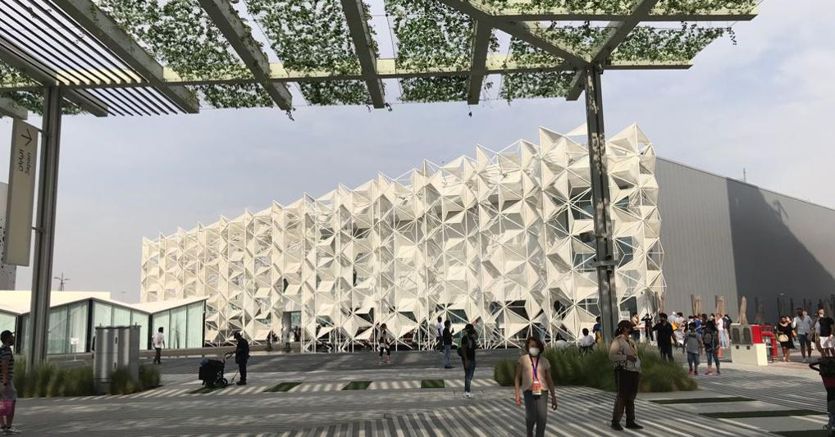
Expo 2020 in Dubai, here are the strangest (and most beautiful) pavilions
Beautiful on the outside, often unfathomable on the inside. We don’t want to make a very frank judgment, but many of the pavilions seen at the Dubai Expo left us with that impression.
Let’s be clear: we don’t want to say that the contents are missing, quite the opposite. If there is anything, sometimes there is too much. But without evidence, it is often difficult to grasp its meaning or fully comprehend the technological and innovative outcome, which is the core of this global exhibition, entitled Connecting Minds, Creating the Future (Connecting Minds, Creating the Future), broken down into the macro themes of sustainability, mobility and opportunity.
Like tomato jars
It is not clear, for example, why in the United States pavilion they make us ride a kind of conveyor belt at the entrance, as if we were jars of tomatoes to be filled and turned over, and thus cross the entire exhibition path, which is in fact not very attractive and a bit of a defeat, at least until The last room, very scenic.
immersive experiences
The Dutch Pavilion content is also not immediate, which, however, is an immersive experience that is really worth trying, and worthy of an art biennial. At the entrance they give us a canopy which we will open only in the central hall, while from the roof of some kind of former factory or former granary, the images projected onto the canopies fall. The pavilions of New Zealand and Singapore are also based on the emotions of the course of the exhibition – and therefore on the immediate participation of the visitor.
The latter, in particular, impressed us with its green architecture. A large vertical (and horizontal) garden meant to tell the story of the ingenuity and techniques needed to reforest the planet, but for us it was above all a rejuvenating oasis in the infernal heat of Dubai. Small boats and hammocks float and visitors are invited to dip their feet (an experience we’d like to avoid).
desert and technology
From the Paradise Gardens of Singapore to the desert sands of the United Arab Emirates, whose huge pavilion is one of the most popular (after all, it is played at home). If you can overlook the goal of the project’s self-celebration, you can appreciate the combination of digital elements and the use of real materials, such as sand that recreate desert dunes.

“Organizer. Social media geek. General communicator. Bacon scholar. Proud pop culture trailblazer.”

